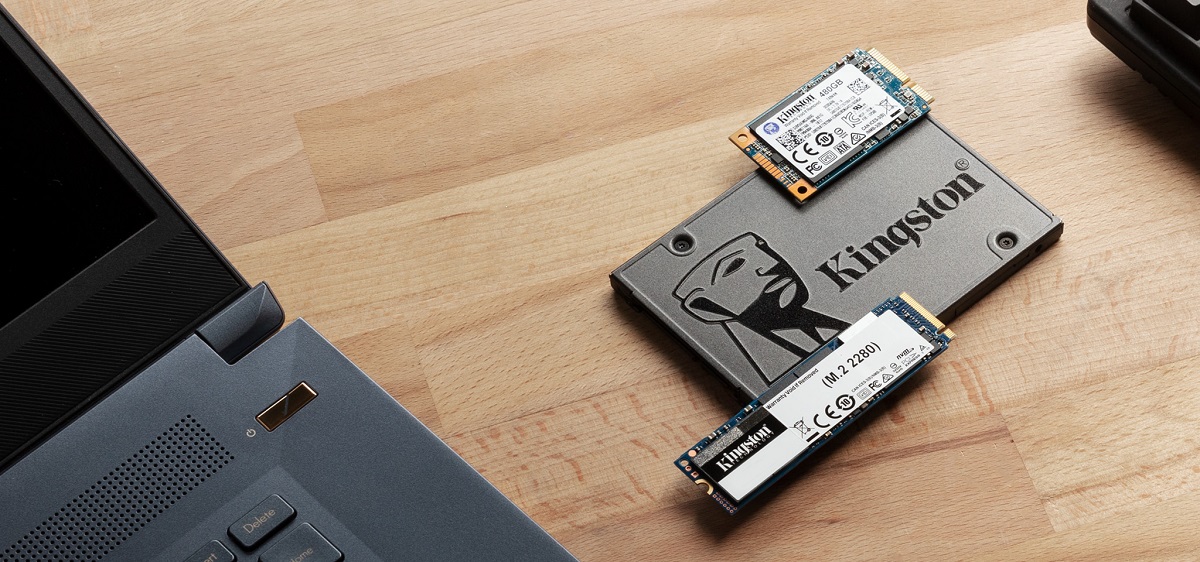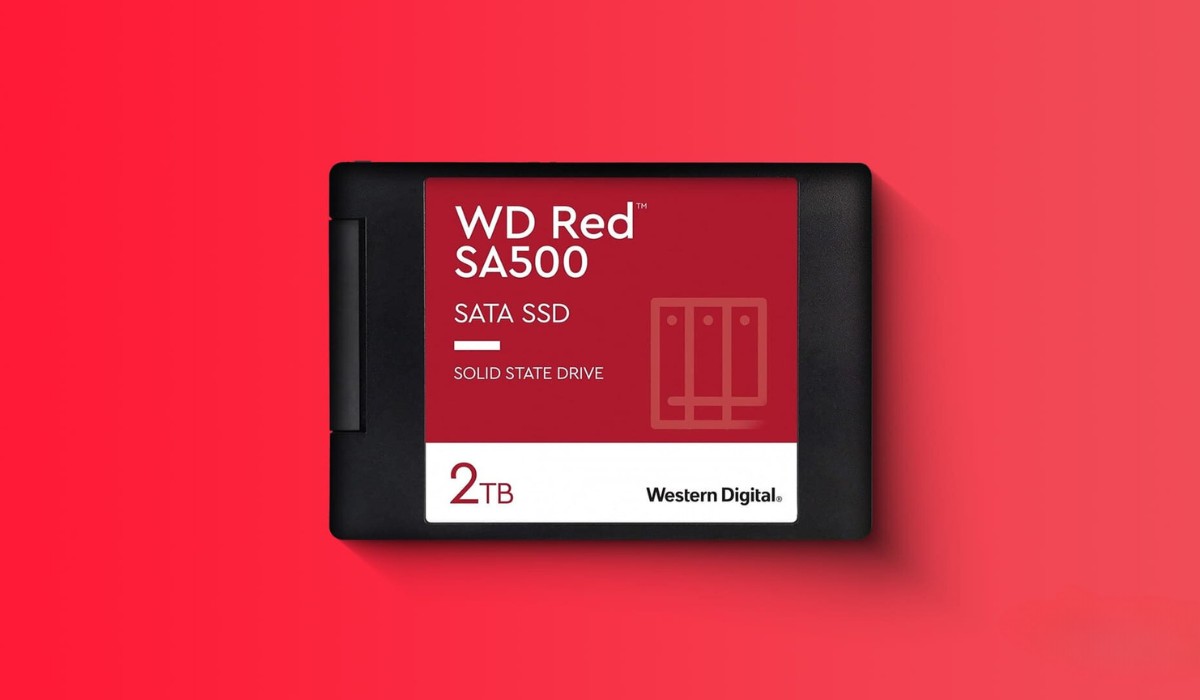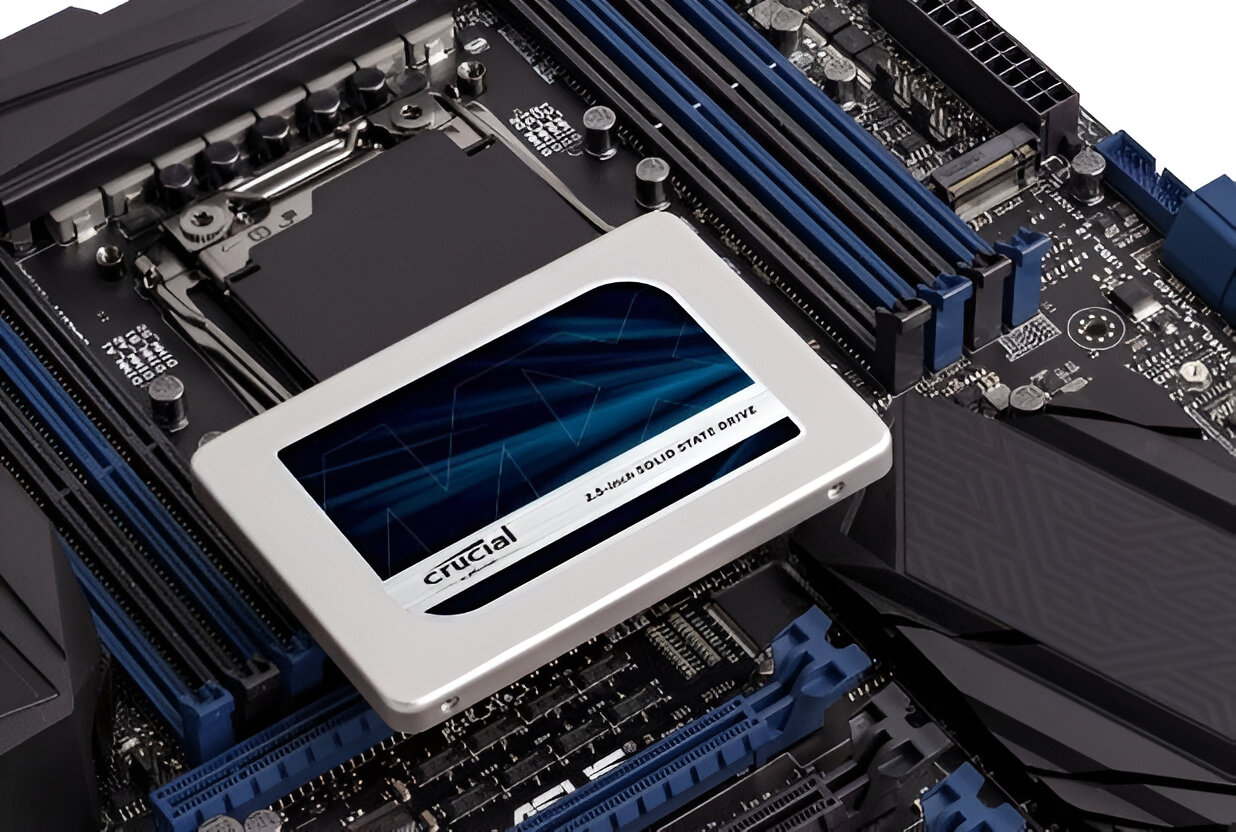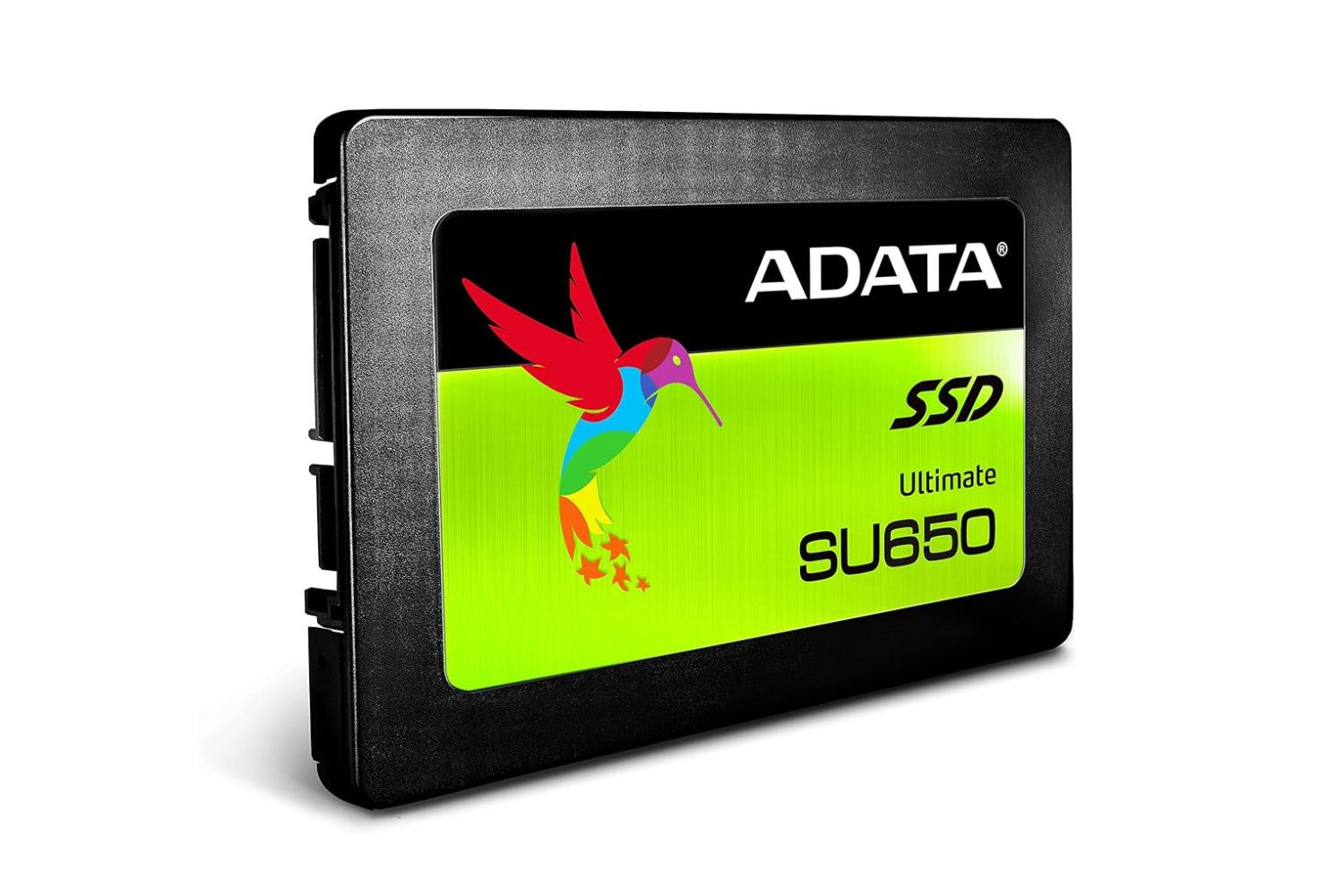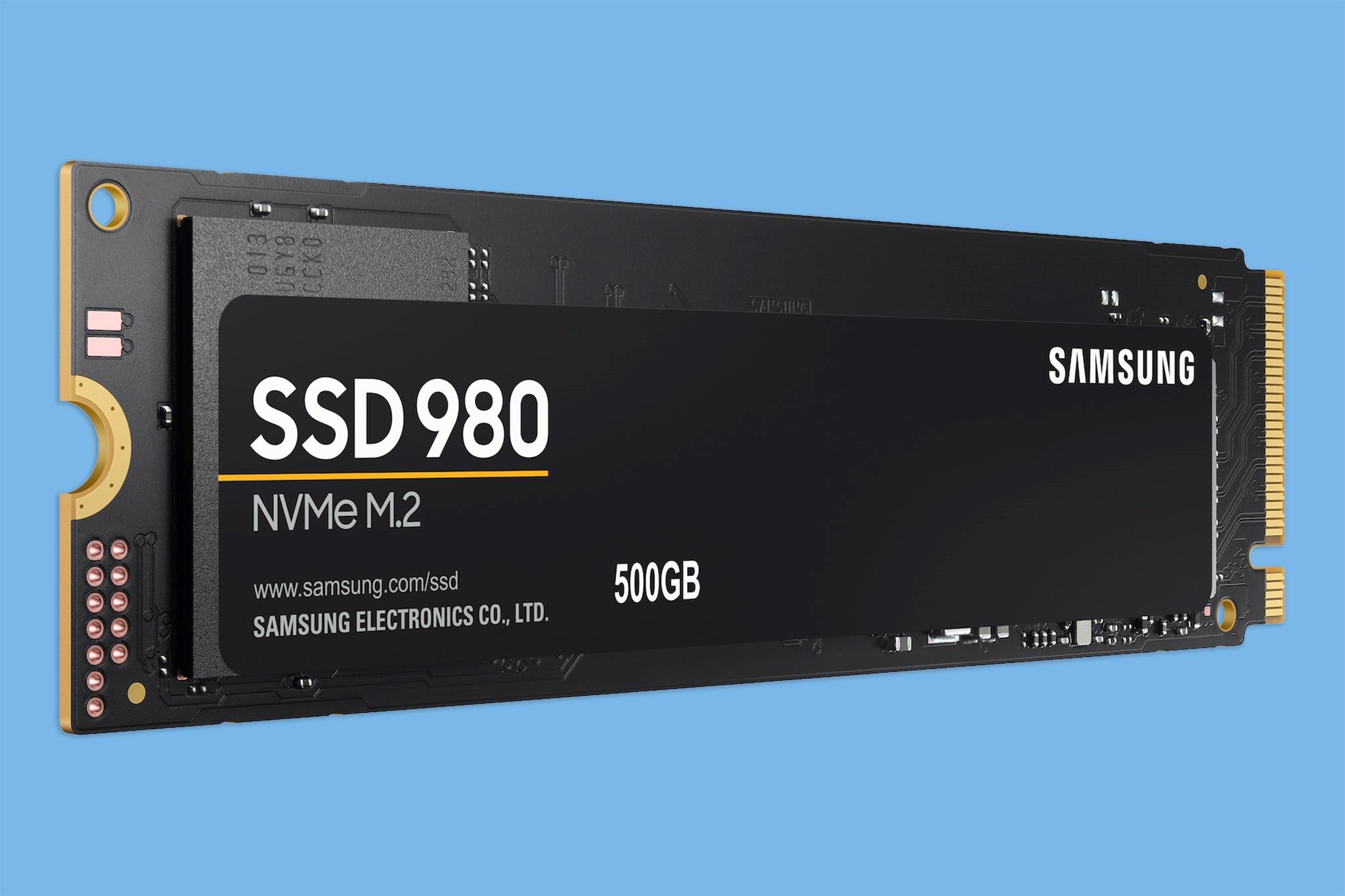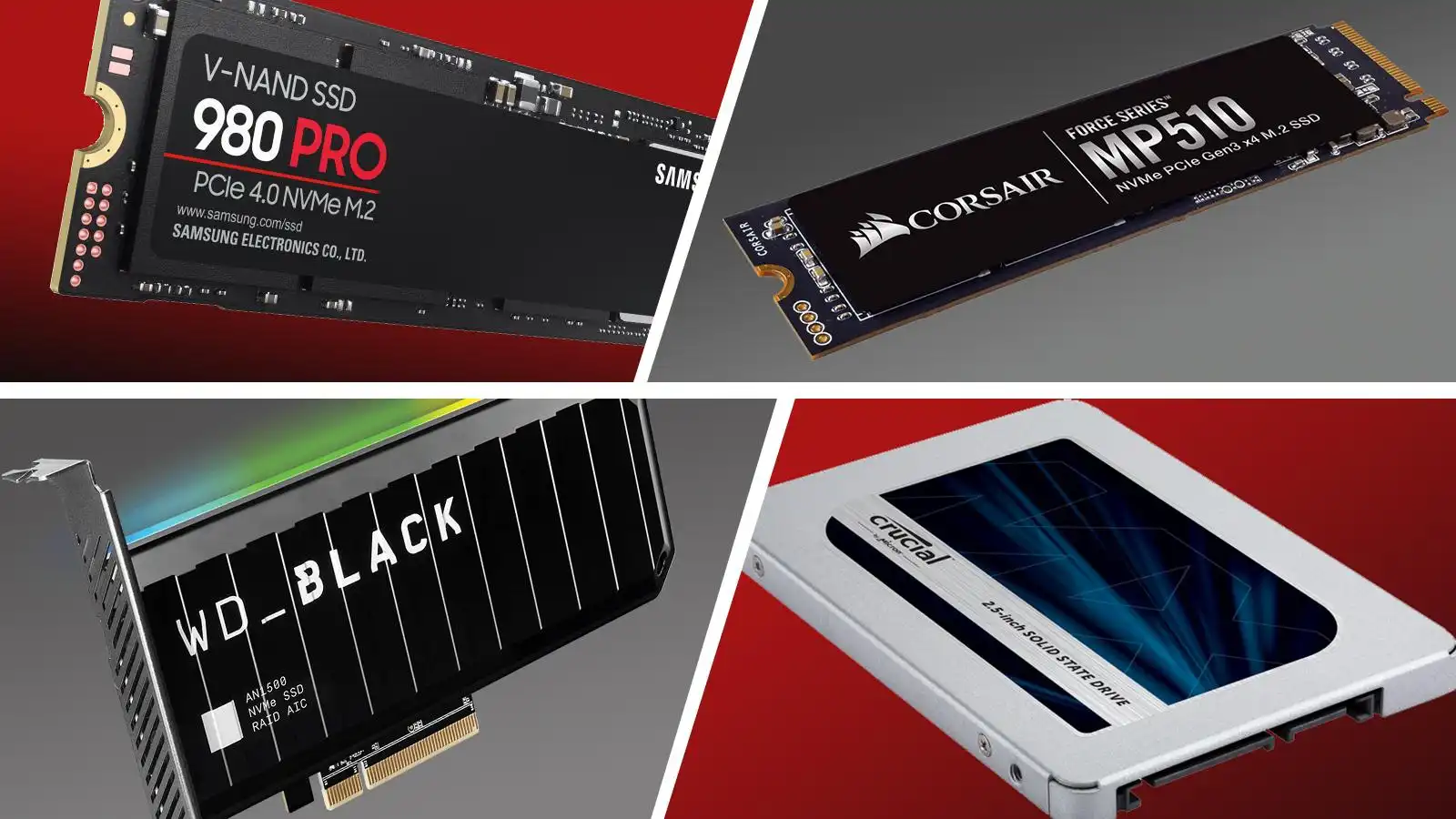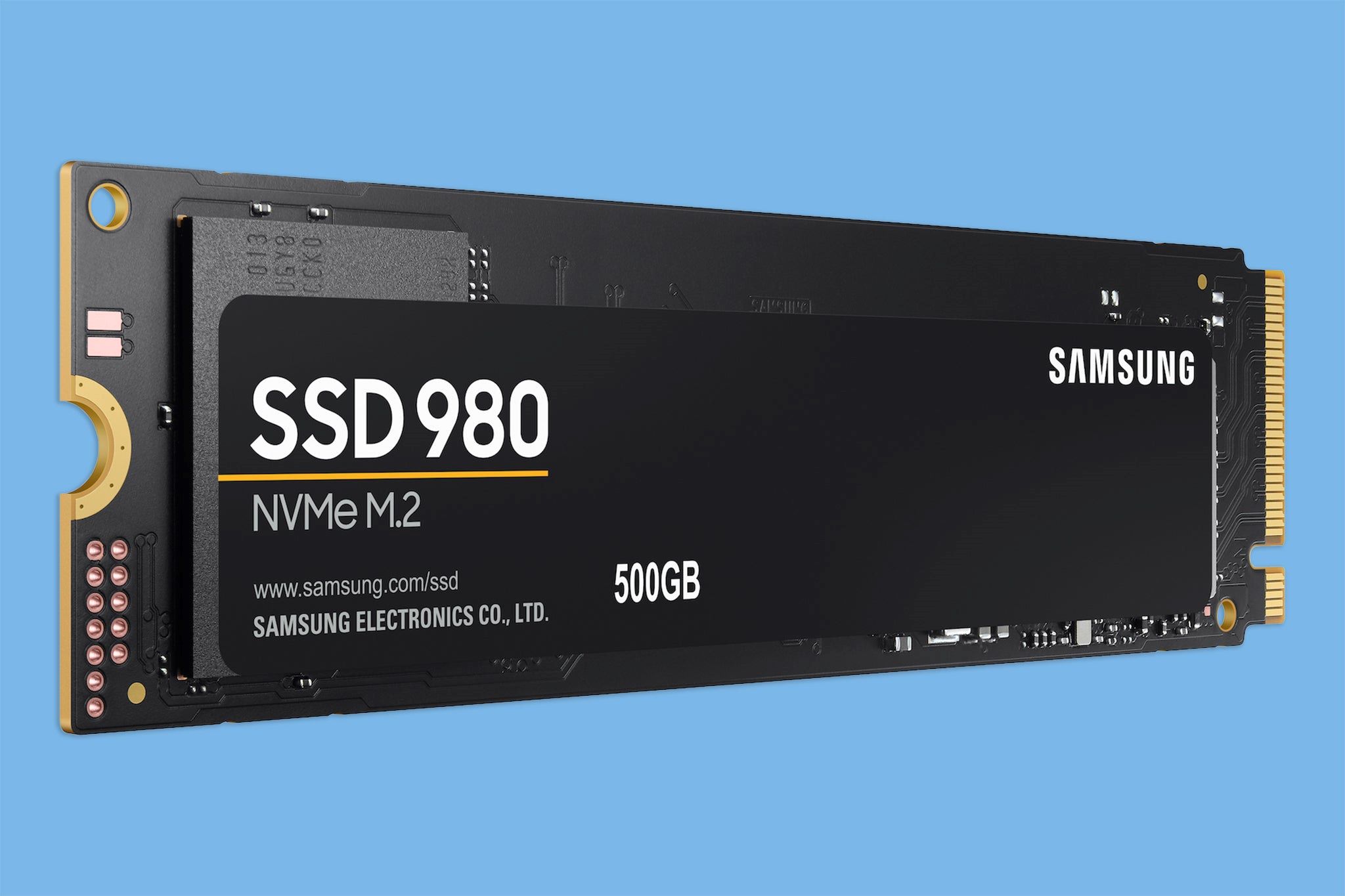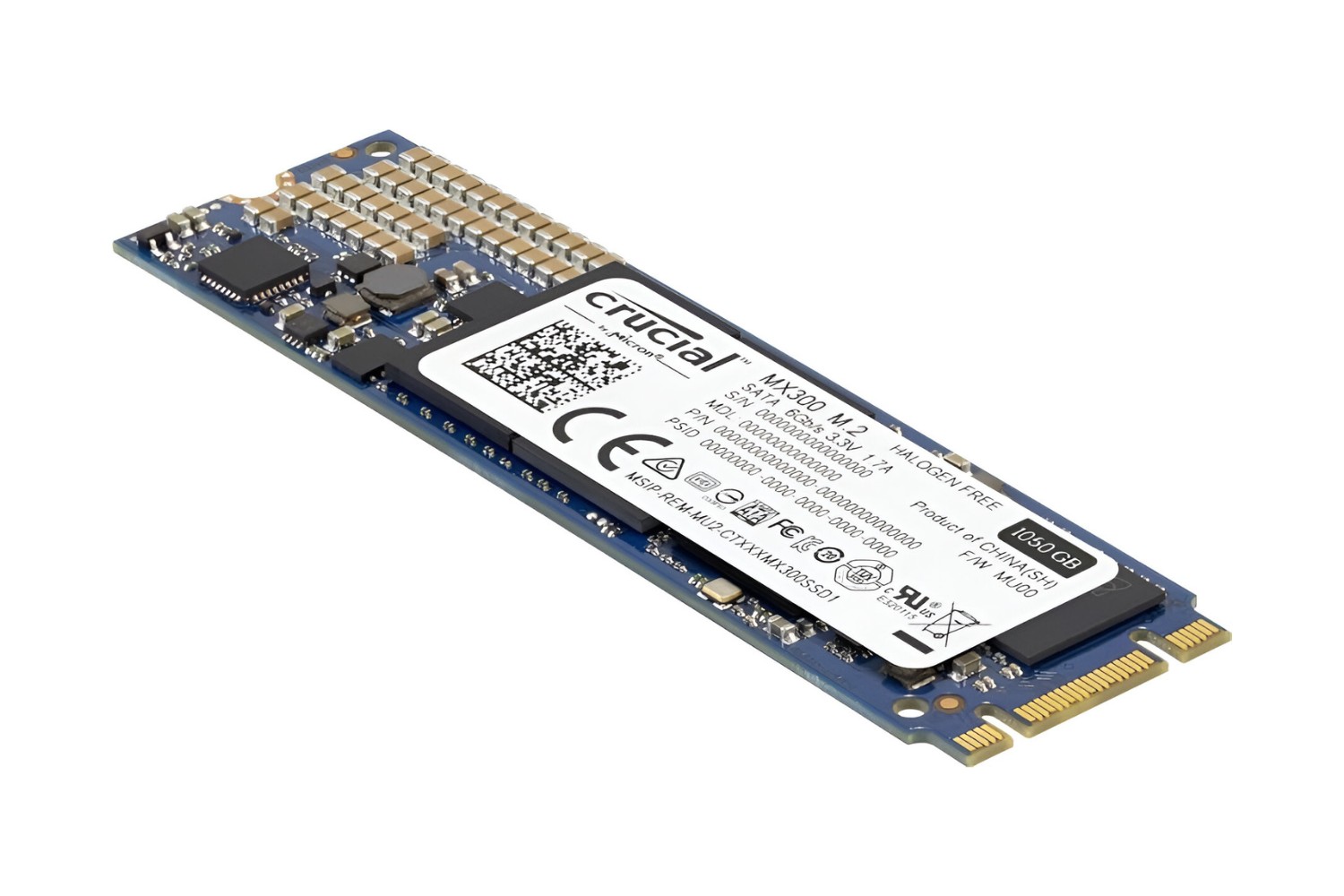Introduction
Welcome to the world of SSDs, where faster and more efficient storage solutions have revolutionized the way we access and store data. If you’re in the market for an SSD, chances are you’ve come across the term “NAND.” What exactly does NAND mean, and how does it contribute to the performance of your SSD?
NAND, short for “Not AND,” is a type of flash memory that is commonly used in Solid State Drives (SSDs). It has become the go-to technology for storage devices due to its high speed, reliability, and cost-effectiveness. Understanding how NAND works and the different forms it takes can help you make an informed decision when choosing an SSD for your specific needs.
In this article, we will delve into the inner workings of NAND and explore its various types, advantages, and disadvantages. By the end, you will have a better understanding of why NAND-based SSDs have become the industry standard and how they impact your overall computing experience.
So, let’s dive into the fascinating world of NAND and gain some insight into the technology driving our digital age.
What is NAND?
NAND, short for “Not AND,” is a type of non-volatile flash memory that is widely used in modern SSDs. It is named as such because of its logical operation, which involves using the NOT gate in combination with the AND gate to store and retrieve data.
NAND flash memory works by utilizing a grid of memory cells, each consisting of a floating-gate transistor. These cells are organized in a series of blocks and are responsible for storing digital information. Each cell can hold multiple bits of data, typically ranging from one to four bits.
Unlike volatile memory like RAM, NAND flash memory retains data even when the power is turned off, hence the term “non-volatile.” This makes NAND an ideal choice for storage devices as it ensures data persistence even during power outages or system shutdowns.
NAND-based SSDs offer significant advantages over traditional hard disk drives (HDDs). One of the key benefits is their faster data access speeds. NAND flash memory allows for high-speed read and write operations, resulting in shorter boot times, faster application loading, and improved overall system responsiveness.
Another important advantage of NAND is its physical durability. Unlike mechanical HDDs, which have moving parts that are prone to failure, NAND flash memory has no moving components. This makes SSDs more resistant to shock, vibration, and other physical impacts, leading to enhanced reliability and longevity.
Additionally, NAND-based SSDs consume less power compared to their HDD counterparts. The lower power consumption results in reduced heat generation and longer battery life, making them an ideal choice for laptops and other portable devices.
Overall, NAND flash memory has transformed the storage industry with its exceptional speed, durability, and power efficiency. As we continue to generate and consume more data, the demand for NAND-based SSDs will only continue to grow, further pushing the boundaries of storage technology.
How Does NAND Work?
Understanding how NAND flash memory works is essential to grasp the inner workings of NAND-based SSDs. Let’s explore the basic principles behind this technology.
NAND flash memory is based on a specific type of transistor called a floating-gate transistor. These transistors are arranged in a grid-like structure, with each transistor representing a memory cell. Each memory cell can store multiple bits of data, typically 1 to 4 bits, by varying the electrical charge trapped in the floating gate.
In a NAND flash memory cell, data can be both written and erased. To write data, a voltage is applied to the control gate, which opens a pathway for electrons to flow, allowing the charge to be stored in the floating gate. To erase data, a higher voltage is applied, causing the charge to dissipate through a process called tunneling.
The organization of NAND flash memory is essential for efficient data storage and retrieval. Typically, memory cells are arranged in blocks, with each block consisting of multiple pages. Each page can store a specific amount of data, usually 2KB or 4KB. To access data, the controller of an SSD sends electrical signals to the appropriate block, page, and memory cell to read or write data.
However, one limitation of NAND flash memory is that data must be written in full pages. This means that even if a small amount of data needs to be modified or updated, the entire page must be erased and rewritten. This process, known as the erase-before-write operation, can impact the performance and lifespan of NAND-based SSDs.
To mitigate this issue, SSDs employ a technique called wear-leveling. Wear-leveling ensures that data is distributed evenly across all memory cells, preventing any one cell from wearing out faster than others. This helps extend the lifespan of the SSD and maintain consistent performance over time.
Overall, the underlying principles of NAND flash memory enable fast, reliable, and non-volatile data storage. This technology has revolutionized the storage industry and plays a crucial role in the performance of NAND-based SSDs.
Different Types of NAND Flash
NAND flash memory comes in various types, each with its own characteristics and capabilities. Let’s explore the different types of NAND flash and their impact on SSD performance.
1. Single-Level Cell (SLC) NAND: SLC NAND is the most basic form of NAND flash memory. In SLC NAND, each memory cell can store one bit of data (0 or 1). This type of NAND offers the highest performance, endurance, and reliability but comes at a higher cost. SLC NAND is commonly used in enterprise-grade SSDs that require consistently high performance and long lifespan.
2. Multi-Level Cell (MLC) NAND: MLC NAND is a more cost-effective alternative to SLC. It can store multiple bits of data per memory cell, typically two bits. The higher density allows for more storage capacity at a lower cost but sacrifices a bit of performance and endurance compared to SLC. MLC NAND is widely used in consumer-grade SSDs that offer a good balance of performance, capacity, and cost.
3. Triple-Level Cell (TLC) NAND: TLC NAND takes the density even further by storing three bits of data per memory cell. This higher density comes at the expense of performance, endurance, and reliability. TLC NAND is commonly found in budget-friendly SSDs that prioritize capacity over speed and endurance.
4. Quad-Level Cell (QLC) NAND: QLC NAND is the newest and most dense type of NAND flash memory, storing four bits of data per memory cell. While QLC offers even higher storage capacity at a lower cost, it has lower performance, endurance, and longevity compared to other types of NAND. QLC NAND is primarily used in consumer SSDs for applications that require large storage capacity, such as gaming or media storage.
Each type of NAND flash has its own trade-offs in terms of performance, cost, and endurance. When choosing an SSD, it’s important to consider your specific needs and budget, balancing factors such as speed, capacity, and longevity. Understanding the different types of NAND flash can help you make an informed decision and choose the best SSD for your requirements.
Advantages of NAND SSDs
NAND solid-state drives (SSDs) have gained immense popularity due to their numerous advantages over traditional hard disk drives (HDDs). Let’s explore some of the key benefits that make NAND-based SSDs the preferred choice for many users:
1. Speed: One of the biggest advantages of NAND SSDs is their exceptional speed. With no mechanical components or spinning disks, SSDs can read and write data at speeds that far exceed those of HDDs. This means faster boot times, quicker application launches, and snappier system responsiveness overall.
2. Durability: NAND SSDs are more durable than HDDs. As they contain no moving parts, they are less susceptible to damage from drops, vibrations, or other physical impacts. This makes SSDs a more reliable storage solution, particularly for portable devices that are prone to jostling during transport.
3. Power Efficiency: NAND SSDs consume significantly less power compared to HDDs. This results in lower energy consumption, reduced heat generation, and extended battery life for laptops and other devices. This makes SSDs an excellent choice for energy-conscious individuals or those who require longer battery operation.
4. Noiseless Operation: HDDs generate noise due to the mechanical movement of their spinning disks and read/write heads. In contrast, NAND SSDs operate silently because they have no moving parts. This not only contributes to a quieter computing environment but also makes SSDs more suitable for noise-sensitive applications, such as audio recording or broadcasting.
5. Compact Form Factor: SSDs are significantly smaller and lighter than HDDs. This compact form factor allows for easy integration into a variety of devices, such as laptops, ultrabooks, tablets, and even smartphones. The small footprint of SSDs opens up opportunities for designing sleeker and more portable devices.
6. Enhanced Shock Resistance: As NAND SSDs do not have moving parts, they are more resistant to shock and vibrations. This is particularly important for mobile devices, as sudden impacts or drops can cause data loss or damage traditional hard drives. With SSDs, the risk of data loss due to physical impact is significantly reduced.
7. Fast Random Access: NAND SSDs excel in random data access, allowing for near-instantaneous retrieval of information. This is particularly beneficial for tasks that involve accessing large amounts of data randomly, such as database management, video editing, or gaming.
Overall, NAND-based SSDs offer a myriad of advantages over traditional HDDs, including higher speed, improved durability, lower power consumption, silent operation, compact size, shock resistance, and fast random access. As technology continues to advance, NAND SSDs will likely become even more prevalent and continue to redefine the storage landscape.
Disadvantages of NAND SSDs
While NAND solid-state drives (SSDs) offer numerous advantages, it’s important to consider their disadvantages as well. Let’s explore some of the drawbacks associated with NAND-based SSDs:
1. Limited Lifespan: NAND flash memory cells degrade over time due to repeated program and erase cycles. Each memory cell has a finite number of cycles it can endure before it becomes less reliable or fails altogether. While modern NAND flash technology has improved in terms of endurance, it is still not as durable as traditional hard disk drives (HDDs). However, wear-leveling techniques and advanced SSD controllers mitigate this issue to a great extent.
2. Cost: NAND SSDs are generally more expensive than HDDs, especially when it comes to high-capacity models. While prices have been decreasing over the years, SSDs still tend to have a higher cost-per-gigabyte compared to HDDs. This cost factor might deter those on a tight budget or those requiring massive amounts of storage.
3. Capacity Limitations: Although NAND SSDs are available in various storage capacities, they still have limitations compared to HDDs. While HDDs can offer multi-terabyte storage options at a relatively lower cost, high-capacity SSDs can be quite expensive. This can be a limiting factor for those who require large amounts of storage for media files, databases, or high-resolution video editing.
4. Susceptibility to Data Loss: While SSDs are generally more reliable than HDDs due to the absence of moving parts, data loss can still occur. In the event of a power failure or sudden system shutdown, data that is in the process of being written to the SSD may become corrupted or lost. However, most modern SSDs are equipped with power loss protection mechanisms that help mitigate this risk to a certain extent.
5. Write Amplification: Write amplification is a phenomenon where the SSD’s controller needs to erase and rewrite more data than is actually being written by the user. This occurs due to the process of wear-leveling and the way data is stored in NAND flash memory. Write amplification not only affects the performance of the SSD but can also reduce its lifespan in certain scenarios.
6. Performance Degradation: Over time, the performance of NAND SSDs can suffer. As more data is written and erased, the SSD may experience slower write speeds, and overall performance may degrade. However, most modern SSDs implement technologies like TRIM and garbage collection to help maintain performance and mitigate the impact of performance degradation.
Despite these disadvantages, NAND-based SSDs remain a popular choice due to their significant advantages over traditional hard drives. The continuous advancements in NAND flash technology aim to address these limitations and further enhance the overall performance and reliability of SSDs.
NAND Flash Endurance and Lifespan
One important consideration when it comes to NAND-based solid-state drives (SSDs) is the endurance and lifespan of the NAND flash memory. Understanding these factors can help users make informed decisions regarding the expected lifespan of their SSDs and how to maximize their longevity.
NAND flash memory cells have a limited number of program and erase cycles they can endure before degrading. This limitation is often referred to as the endurance of the NAND flash. The number of cycles can vary depending on the type of NAND technology used, with Single-Level Cell (SLC) NAND offering the highest endurance, followed by Multi-Level Cell (MLC), Triple-Level Cell (TLC), and Quad-Level Cell (QLC) NAND.
Endurance is typically measured in terms of Terabytes Written (TBW), which represents the number of terabytes of data that can be written to the SSD before its warranty expires. This value is determined by the manufacturer based on their internal testing and specifications. It’s important to note that the endurance rating is an approximation, and SSDs often exceed their official TBW rating, especially under normal consumer usage scenarios.
To maintain performance and extend the lifespan of NAND-based SSDs, various techniques are implemented:
1. Wear-Leveling: SSDs utilize wear-leveling algorithms to evenly distribute the data across the memory cells. This prevents any individual cell from experiencing excessive wear due to frequent writes, thus prolonging the overall lifespan of the SSD.
2. Over-Provisioning: Over-provisioning involves reserving a certain percentage of the SSD’s capacity for maintenance purposes. This allows the drive to perform background tasks such as garbage collection and wear-leveling more efficiently, leading to improved performance and increased longevity.
3. Error Correction Codes (ECC): ECC algorithms are used in NAND-based SSDs to detect and correct errors that occur during data storage and retrieval. These algorithms ensure data integrity and help prevent data loss or corruption, which can contribute to the overall lifespan of the SSD.
It’s important to note that the actual lifespan of an SSD depends on various factors, such as the type of NAND flash used, the workload intensity, and the user’s usage patterns. Typically, consumer-grade SSDs have a lifespan that exceeds the average lifespan of a computer system, making them suitable for everyday consumer use.
Regularly backing up important data and monitoring the health of the SSD can help mitigate the risk of data loss and ensure timely replacement if needed. Additionally, adhering to best practices such as avoiding excessive writes (e.g., by minimizing unnecessary file transfers) and keeping the SSD within recommended temperature ranges can help maximize its lifespan.
While NAND flash memory does have a finite lifespan, advancements in technology continue to improve endurance and reliability. As the market evolves, SSD manufacturers are constantly refining their designs to offer higher endurance models, making NAND-based SSDs a reliable and durable storage solution for a wide range of applications.
Conclusion
NAND flash memory has revolutionized the storage industry, paving the way for faster, more reliable, and energy-efficient solid-state drives (SSDs). Understanding the underlying technology and the advantages and disadvantages of NAND-based SSDs is crucial for making informed decisions when it comes to storage solutions.
NAND flash memory, with its not AND logic and non-volatile nature, provides significant benefits over traditional hard disk drives (HDDs). These benefits include faster data access, improved durability, lower power consumption, silent operation, compact form factor, enhanced shock resistance, and fast random access. These advantages have made NAND-based SSDs the preferred choice for many users across various industries.
While NAND SSDs offer numerous advantages, they also have their limitations. Factors such as limited endurance, higher cost compared to HDDs, capacity limitations, susceptibility to data loss, write amplification, and performance degradation over time should be taken into consideration when selecting an SSD.
To maximize the lifespan of NAND SSDs, wear-leveling techniques, over-provisioning, and error correction codes are implemented. Following best practices, such as minimizing unnecessary writes, regularly backing up data, monitoring SSD health, and adhering to recommended temperature ranges, can also help ensure optimal performance and longevity.
As technology continues to advance, NAND flash memory will likely improve in terms of durability, capacity, and overall performance. These advancements, coupled with ongoing developments in SSD controllers and firmware, will further enhance the reliability and efficiency of NAND-based SSDs.
In conclusion, NAND flash memory has transformed the storage landscape, offering unparalleled speed, enhanced durability, and improved power efficiency. While there are considerations to keep in mind, NAND-based SSDs remain an excellent choice for users seeking high-performance storage solutions that can withstand the demands of modern computing.







